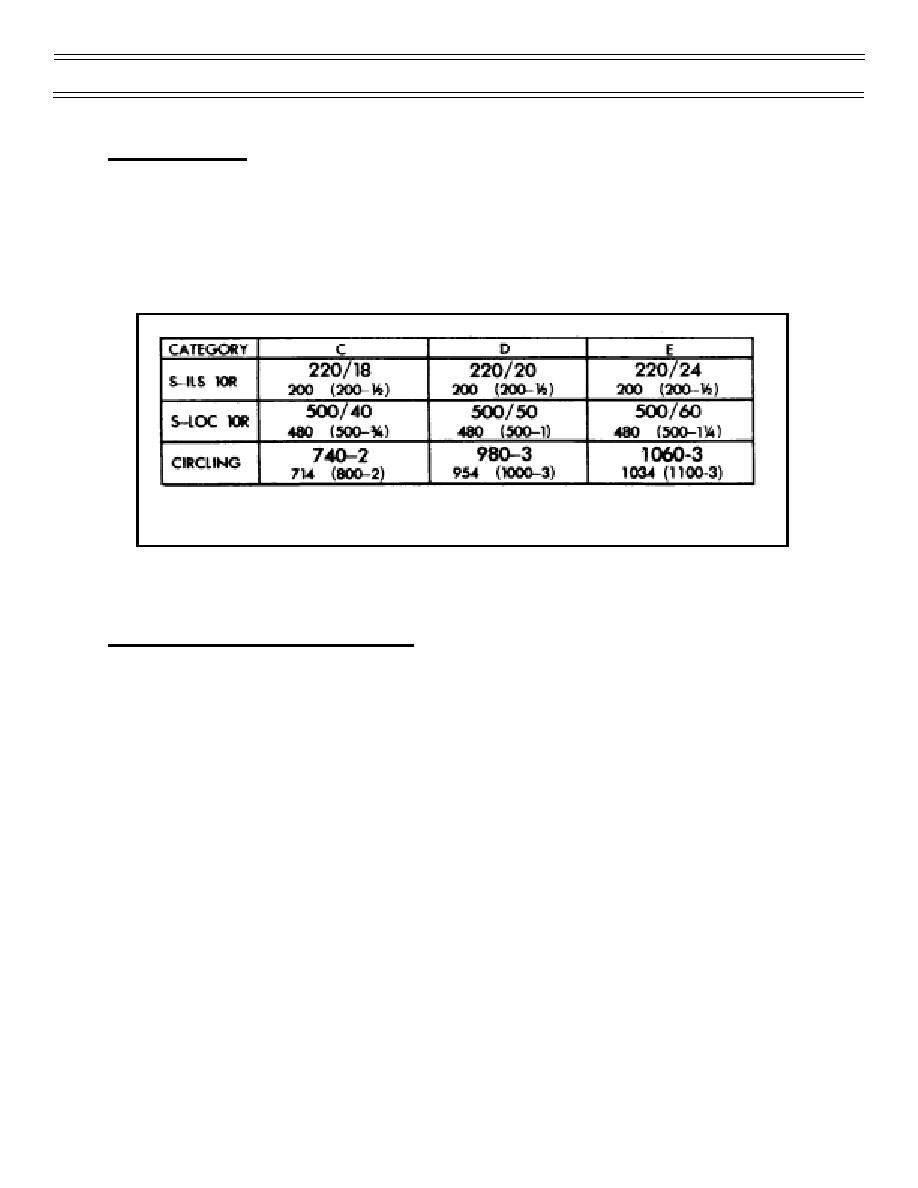
Flight Procedures
Instrument Flight
Localizer Approach
The localizer approach uses the ILS equipment, minus glideslope signal generation equipment. You may
have to perform this approach because of equipment failures in your aircraft, on the ground, or because
the runway lacks a glideslope transmitter. The localizer approach is non-precision with minimums higher
(Figure 40) than a full ILS approach to the same runway. The MAP is determined by timing from the FAF,
by DME, or by radar. As in the ASR, plan your descent so that you are leveled off and on speed prior to
the MAP.
Figure 40: ILS MINIMUMS
Back Course Localizer Approach (BC LOC)
The back course localizer is established along the centerline of a runway in the opposite direction to the
front course.
Caution should be taken when flying a back course LOC approach because of reverse sensing when the
back course is selected in the HSI. To center the CDI, it will be necessary to steer the aircraft in the
direction opposite the CDI deflection. An alternate procedure is to set the front course into the HSI. This
will induce a normal sensing display in the HSI. Again caution should be taken because the Azimuth
Deviation Bar in the ADI will continue to display reverse sensing.
Which ever procedure is used, a higher level of concentration is required from the pilot to maintain
orientation and fly the approach correctly.
PARTIAL PANEL APPROACHES
In the T-45A you will be performing partial panel (standby AI) approaches which will require a major
change in your scan. All ADI information is still available, but you’ll have to get it from different
instruments. Take attitude information from the standby AI and all heading and ILS steering information
from the HSI. See “ADI Failure” and “Partial Panel”.
VISUAL MANEUVERS
Visual maneuvers, IFR procedures executed in VMC conditions, are included here because once you
reach the MAP or are cleared by ATC for a visual approach, you will complete your approach and landing
VFR. It is important that you adjust your rate of descent to arrive at the MDA well ahead of reaching the
MAP so that you have time to visually acquire the field. Non-precision approaches that have a visual
descent point (VDP) require you to remain at the MDA until the visual descent point is passed. During low
visibility, avoid the tendency to “duck under” or go low during the final approach to touchdown.
Page 109
(12-00) Original



 Previous Page
Previous Page
